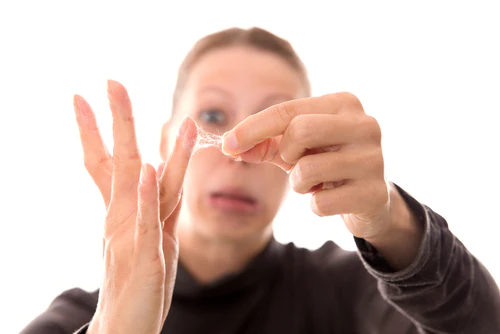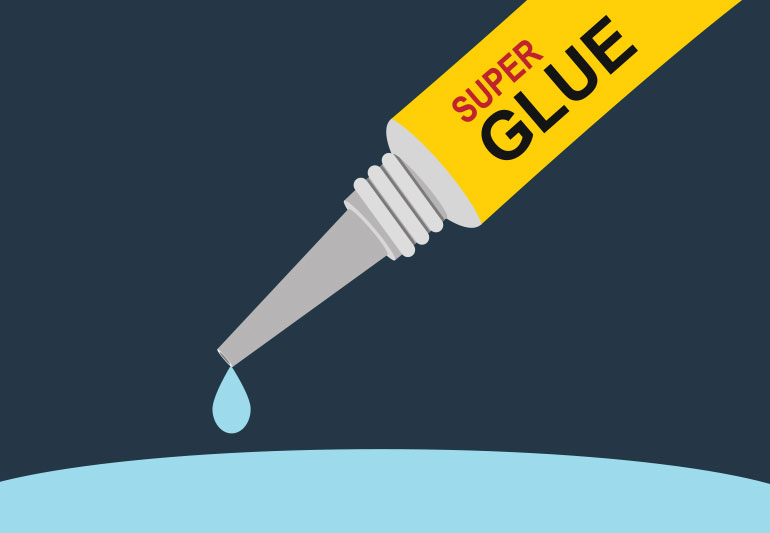Why does super glue get hot
Superglue is not a heat-resistant adhesive. However, in certain cases, it can become hot when the moisture in the air triggers a chemical reaction, which causes the molecules to heat up.
It is most common with resin-based glues. The glue will usually fuse together very quickly once the chemical reaction occurs and it becomes hot. This heating and cooling procedure often bonds the adhesive quickly and strongly.
Why Does Super Glue Get Hot?
When superglue dries, it gets hot because of an exothermic chemical reaction. This occurs when the monomers in the glue bond to form a network. Exothermic reactions are chemical reactions that release heat energy. Super glue produces heat as the monomers form a polymer network which makes it hot for sometime.
The energy in the chemical bonds of the monomers is released, and this energy is converted to heat. The amount of heat generated depends on the bonding area and the glue thickness used.

Why does super glue get hot on fabric?
Why does super glue get so hot when used on fabric, even though you know how great it is to stick things together quickly?
The formation of polymer networks when bonding causes an exothermic chemical reaction. The heat created by this chemical reaction causes the glue to adhere to fabrics like cotton and wool.
Super glue is not meant to be a permanent adhesive. It can be used temporarily to fix clothing rips, but it’s not intended to be. Use hot glue instead or an adhesive that is designed for fabrics.
Factors That Affect Heat Production In Super Glue
The heat production in super glue can get affected by several factors. One factor is the type of material on which the super glue is applied. Porous materials such as paper or wood absorb more water, and when the glue dries, it produces more heat. Metal or glass are non-porous and do not produce as much heat.
The amount of heat generated can be affected by the thickness of the glue layer. A thicker glue layer will produce more heat than one that is thin. Super glue can produce heat based on ambient temperature and humidity. Higher temperatures and humidity will generally result in greater heat production.
Super Glue – Which materials can’t withstand heat
Super glue provides a very strong bond in a short time. It can be used to bond almost any object or material.
Super glue is made of cyanoacrylate. It is available in liquid or gel form.
The glue will bond once it comes into contact with water vapor or moisture in the air.
Super glue will begin to dry out and bond as soon as it is exposed to the air.
The heating element may be useful for superglue, but it isn’t recommended or ideal for all materials.
If superglue gets too hot, it may melt some materials.
- Silk
- Polystyrene
- Plastics
- Other
The following materials are not affected by the heat of superglue:
- Metal
- Paper
- Rubber
- Wood
- Heat resistant plastics
- other
What happens if superglue gets on surfaces you don’t wish to be on? For example, your eyelids and lips?
You can easily remove super glue from your skin or any other surface.
Removing Super Glue with water is impossible because it is water-based. Moisture causes it to bond and harden.
Some very effective remedies are sure to work. They are also easy to use.
Does Super Glue Burn?
Superglue is a Cyanoacrylate Adhesive. This means it bonds chemically to the surface of what you are trying to glue. This chemical bond can hold things together in extreme conditions.
Super glue is used for everything, from dentistry to art and space travel. What makes super glue so special?
It’s fast-curing, so if you want something to be glued immediately (like your hand after a dog bites), this is the adhesive for you. It is also able to withstand high temperatures and can even be used in underwater environments. This makes it ideal for various industries that require adhesives to survive.
Is super glue heat-sensitive?
Yes, super glue is heat-sensitive and softens or melts at higher temperatures. Moisture in the air or on surfaces to be bonded activates the adhesive during the curing process.
Heat and moisture together accelerate the curing. Too much heat will cause the adhesive to react differently and become softer and less effective. Super glue should be stored in a cool, dry environment and away from direct heat sources.
Can Gorilla super glue withstand heat?
Gorilla Super Glue can withstand temperatures up to 200degF 93degC directly on the bonding line. It can withstand extended exposure up to 250degF when stored and handled properly. It is useful in a wide range of surfaces and joints subjected to high temperatures.
It is important to remember that Gorilla Super Glue shouldn’t be used for any application where the temperature exceeds the maximum specified. It is also not recommended to use Gorilla Super Glue for parts exposed to extreme heat, such as engines or exhaust systems.
Superglue: How to use it safely?
The liquid or gel version of Super glue sets up quickly when exposed to air. Super glue can be used to fix household items. However, it is dangerous if used incorrectly. Here are some tips on how to use super glue safely.
- Before using the product, always read the instructions.
- Super Glue must only be applied to clean, dry surfaces.
- Super Glue dries quickly, so use caution when applying.
- Super glue can irritate and burn the skin. Super glue can cause skin irritation or burns. Rinse it with warm water immediately if you accidentally get some on your body.
- Keep superglue bottles away from children.
- you can also wear safety gloves when using super glue to avoid it sticking directly to your hands and skin which might cause unwanted issues

Store Super Glue After Use to Maximize its Shelf Life
You must store super Glue correctly to avoid it drying out in the tube and to extend its shelf life.
How to extend the life of superglue after it has been opened:
- You should wipe the tube’s lid and nozzle after each use to remove any glue that may have gotten on them. This will prevent the lid from getting stuck to the nozzle.
- Place the cap back on the tube immediately and squeeze it tightly.
- Place the tube in a ziplock bag.
- Keep it away from heat or direct sunlight.
Final Thoughts
Super glue becomes hot as it dries because of an exothermic chemical reaction that occurs when the monomers in the glue bond to form a network. The heat production in super glue can get affected in many ways, including the material to which it is applied, the thickness and temperature of the glue layer, as well as ambient humidity and temperature.
Frequently Asked Questions
At what temperature does super glue melt?
The melting point of superglue varies according to the type of adhesive. The melting point for the low-temperature formulation is around 82 degrees Fahrenheit. The high-temperature version is around 187 degrees Celsius or 368 degrees F. You don’t have to worry, as it is rare that consumer hardware reaches this temperature.
Does Super Glue become toxic when heated up?
Superglue is not toxic if heated. The glue is composed of monomers of cyanoacrylate, which are non-toxic. The glue is not harmful, and the fumes released by heating it are not harmful.
Can superglue be dissolved?
Acetone can dissolve super glue. Acetone will dissolve the superglue and turn it into liquid. You can then remove the glue.

Being associated with art and craft field since decades as a hobbyist and life long learner has given me an opportunity to learn many new things related to art, craft, paints and pottery which i am trying to share with your guys on this website. I have expertise of being professional painter and potter for the last 20+ years
I have learned mind blowing cool tips and insights which makes me a person with ability to improvise and come up with creative ideas and solutions to make stunning and impeccable art pieces of all types which are adored by people across the globe on this website and other platform.


